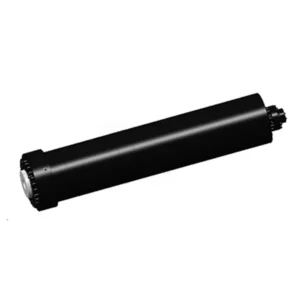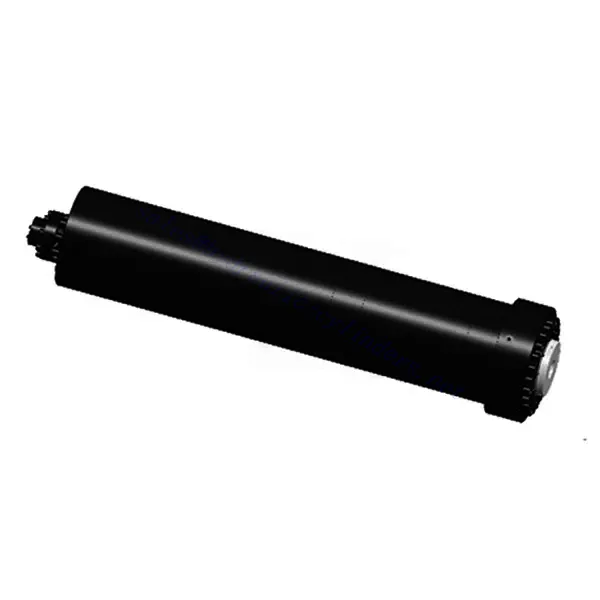Filter Press Cylinder
Filter Press Cylinder

The filter press cylinder is a highly effective tool designed to optimize filtration efficiency and performance in various industrial applications. With its robust construction and advanced features, this cylinder is crucial in separating solids from liquids, ensuring superior filtration outcomes.
The filter press cylinder is vital to achieving efficient and high-performance filtration. With its durable construction, efficient filtration capabilities, versatile compatibility, and customizable options, this cylinder delivers exceptional results in various industrial applications. By following the recommended usage methods and maintenance practices, you can maximize the filter press cylinder’s performance, longevity, and reliability in your filtration processes. This advanced and reliable cylinder will elevate your filtration efficiency and achieve superior results.
Filter Press Cylinder Key Characteristics:
- High-Quality Construction:
- The filter press cylinder is meticulously crafted using premium-grade materials, ensuring durability and longevity.
- Its sturdy construction enables it to withstand the demanding conditions of filtration operations, delivering reliable performance.
- Efficient Filtration:
- This cylinder is engineered to provide efficient and precise filtration by effectively separating solids from liquids.
- The filter press cylinder optimizes filtration, producing cleaner and higher-quality filtrate.
- Versatile Compatibility:
- The cylinder is designed to be compatible with various filter press systems, making it adaptable to different industrial filtration setups.
- Its versatility allows seamless integration into existing filtration processes, enhancing overall efficiency.
- Customizable Options:
- The filter press cylinder offers customizable options to cater to specific filtration requirements.
- Tailor the cylinder’s specifications, such as size, filtration capacity, and pressure rating, to meet the unique needs of your filtration application.
Filter Press Cylinder Parameter:
| Product Name | Filter Press Hydraulic Cylinder |
| Features: | Provide thrust/push the pressure plate to compress/pull pressure to compress the pressure plate |
| Bore diameter: | 160mm~580mm |
| Rod diameter: | 110mm~410mm Stroke ≤2600mm |
| Thrust force: | Maximum 11889KN (Cylinder diameter 580mm/pressure 45MPa) |
| Filter Press Cylinder Applications: | Filter Press |
Rod diameter: 110mm~410mm
Stroke ≤2600mm
(Cylinder diameter 580mm/pressure 45MPa)
Press Cylinder Factory:

Usage Method Of Filter Press Cylinder:
- Installation:
- Begin by ensuring that the filter press system is properly set up and ready for installation.
- Carefully position the filter press cylinder within the designated mounting area of the filter press framework.
- Securely fasten the cylinder using appropriate bolts or clamps, ensuring a stable and reliable connection.
- Connection and Sealing:
- Connect the filter press cylinder to the hydraulic system of the filter press machine.
- Verify that all hydraulic connections are secure and leak-free.
- Properly seal the cylinder to prevent bypassing or leakage during filtration.
- Adjusting Filtration Parameters:
- Familiarize yourself with the filtration parameters required for your specific application.
- Adjust the filtration parameters, such as pressure, temperature, and duration, according to the filtration process requirements.
- Ensure the filter press cylinder can handle the specified parameters without compromising integrity.
- Initiating Filtration:
- Activate the filter press machine to initiate the filtration process.
- The filter press cylinder will apply pressure to the filter plates, promoting the separation of solids from the liquid.
- Monitor the filtration process closely to ensure optimal performance and adjust parameters as necessary.
How To Repack A Hydraulic Cylinder?
Repacking a hydraulic cylinder involves replacing the seals within the cylinder to restore its performance and prevent leakage. Here’s a step-by-step guide on how to repack a hydraulic cylinder:
- Gather Necessary Tools and Materials:
- Safety goggles and gloves
- Wrenches or socket set
- Seal kit (including new seals and O-rings)
- Cleaning solvent or hydraulic oil
- Rags or towels
- Prepare the Work Area:
- Ensure you have a clean, well-lit workspace to disassemble and reassemble the hydraulic cylinder.
- Lay down a protective covering to catch any spills or debris.
- Release Hydraulic Pressure:
- Shut off the hydraulic system and relieve the pressure in the cylinder by activating the control valve or removing the hydraulic hose.
- Engage any safety locks or blocks to prevent accidental movement of the cylinder during the repacking process.
- Remove the Cylinder:
- Detach the hydraulic cylinder from the equipment or machinery using appropriate wrenches or a socket set.
- Take note of the cylinder’s orientation and position to ensure proper reinstallation.
- Disassemble the Cylinder:
- Carefully remove the cylinder end caps or retaining bolts to access the piston and seals.
- Pay attention to the order and arrangement of the components as you disassemble the cylinder.
- Clean the Cylinder:
- Clean all the cylinder components using a cleaning solvent or hydraulic oil, including the piston, cylinder bore, and end caps.
- Wipe away any dirt, debris, or old lubricant from the surfaces using rags or towels.
- Remove Old Seals:
- Identify the seals that need to be replaced and carefully remove them from the piston and cylinder bore.
- Use a seal pick or a small screwdriver to gently pry out the seals, taking care not to damage the cylinder or piston surfaces.
- Install New Seals:
- Take the new seals from the seal kit and apply a thin coat of hydraulic oil to lubricate them.
- Carefully insert the new seals into their grooves on the piston and cylinder bore.
- Ensure the seals are properly seated and aligned.
- Reassemble the Cylinder:
- Reassemble the cylinder in the reverse order of disassembly, following the manufacturer’s guidelines if available.
- Securely tighten the retaining bolts or end caps, ensuring proper alignment and torque specifications.
- Test and Check for Leaks:
- Reconnect the hydraulic cylinder to the equipment or machinery.
- Slowly pressurize the hydraulic system and activate the cylinder to check for any leaks or abnormal operation.
- Inspect all connections and seals for signs of leakage.
- Reintegrate the Cylinder:
- Once you have confirmed that the repacked cylinder is functioning properly and without leaks, reinstall it back into the equipment or machinery.
- Ensure the cylinder is properly aligned and securely fastened.
工厂的能力和产能:
(1) 装配
我们拥有一流的自主研发装配平台。液压油缸生产车间拥有 4 条半自动提升油缸装配线和 1 条全自动倾斜油缸装配线,设计年生产能力 100 万支。特种油缸车间配备了各种规格的半自动清洗装配系统,设计年生产能力 20 万只,并配备了知名数控加工设备、加工中心、高精度油缸加工专用设备、机器人焊接机、自动清洗机、油缸自动装配机、自动喷漆生产线等。现有关键设备 300 多台(套)。设备资源的优化配置和高效利用,保证了产品的精度要求,满足了产品的高质量需求。


(2) 机加工
加工车间配备了定制的斜轨车削中心、加工中心、高速珩磨机、焊接机器人及其他相关设备,可加工最大内径 400 毫米、最大长度 6 米的气缸管。

(3) 焊接

(4) 油漆和涂料
配备中小型圆筒自动水性漆喷涂线,实现机器人自动上下料和自动喷涂,设计产能为每班 4000 件;
我们还拥有一条由动力链驱动的大型油缸半自动喷漆生产线,设计产能为每班 60 箱。


(5) 测试
我们拥有一流的检验设施和试验台,确保气缸的性能符合要求。

We are one of the best hydraulic cylinder manufacturers. We can offer comprehensive hydraulic cylinders. We also provide corresponding 农用齿轮箱. We have exported our products to clients worldwide and earned a good reputation because of our superior product quality and after-sales service. We welcome customers at home and abroad to contact us to negotiate business, exchange information, and 与我们合作!
参观我们的 VR 工厂
通过以下方式参观我们的 VR 工厂
叉车液压缸如何工作?
液压缸应用:


